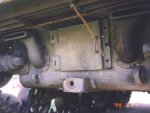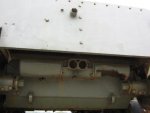- 2,750
- 920
- 113
- Location
- Oakwood, Ga
Beautiful, will you be able to get it running again?
Steel Soldiers now has a few new forums, read more about it at: New Munitions Forums!

Here's a page with more Sherman motor pictures.Came with a variety of engines- Chryslers were radials. NOT something I would want to work on. Ford was an 8 cyl, Cat even made a few multifuels for them.
Chrysler version: Five 251 cubic inch, flathead Dodge six cylinder truck engines [total 1253 cid]. The biggest thing was the design and development of the casting, that married everything, it must be huge, probably heavier than… but in a tank I guess, you care, at least not a whole lot. (30 cylinders!) There’s an awful lot of hand work on that, all the welded manifolding and stuff, and you’ll see that it has five, independent carburetors. It has five distributors. It has five vibration dampers on the front end of each crank shaft, and on the back, it has a big set of spur gears, each pinion having an overrunning clutch, so if you loose an engine, you don’t hold back the other four. [This particular engine was actually discovered in Argentina and restored by Chrysler.]
Looks like Rubber Tracks; interesting that wasn't typical was it?congrads on your new acquisition.
Last week I was at the WW2 museum in New Orleans at a BSA fundraiser and took these pics of a super rare M4A3E9.
Enjoy




Yeah, a little armor by the front door has got a lawn gnome beat hands down!Nice maybe one day I will join the Tank in my yard club one day

We get it, advertisements are annoying!
Sure, ad-blocking software does a great job at blocking ads, but it also blocks useful features of our website like our supporting vendors. Their ads help keep Steel Soldiers going. Please consider disabling your ad blockers for the site. Thanks!
